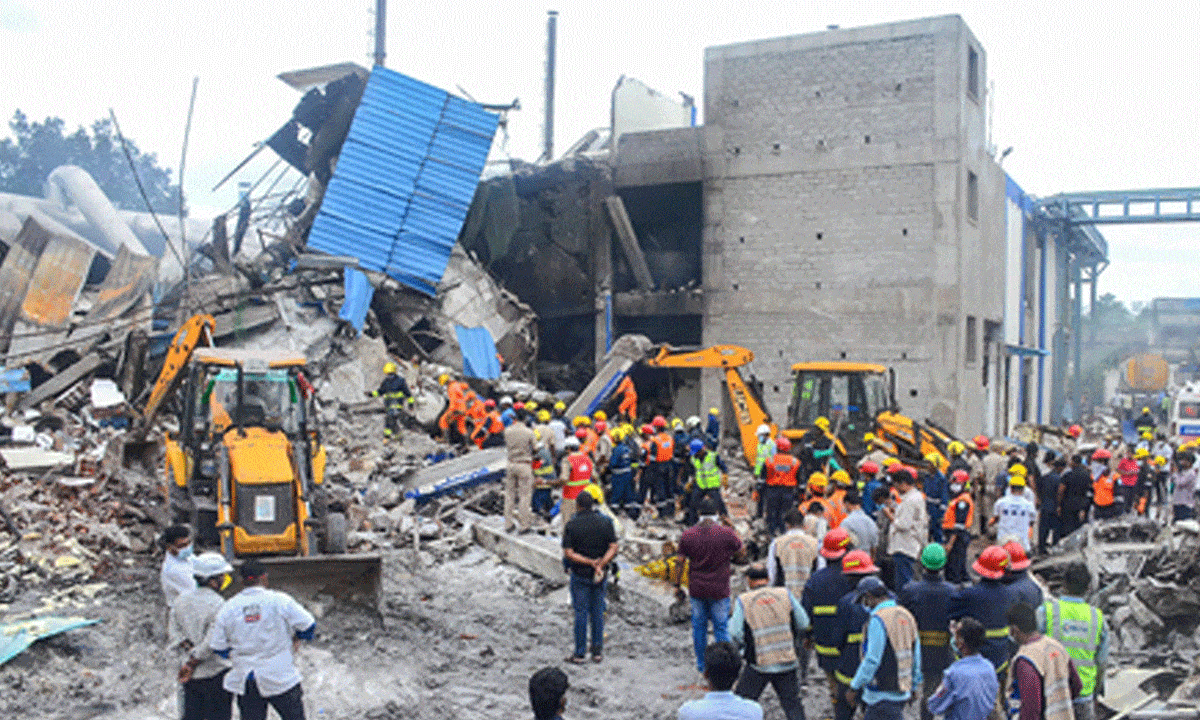Telangana Factory Inferno: Did Negligence Cost 40 Innocent Lives?
A massive fire at the Sigachi Pharma chemical factory in Telangana’s Sangareddy district has resulted in the tragic loss of at least 40 lives.

Sangareddy, Telangana: A massive fire at the Sigachi Pharma chemical factory in Telangana’s Sangareddy district has resulted in the tragic loss of at least 40 lives. The blaze, which ripped through the aging facility on Tuesday, has exposed shocking lapses in fire safety and regulatory oversight.
Table of Contents
Factory Had No Fire NOC or Safety Audit
According to initial reports, the Sigachi Pharma unit was operating without a mandatory Fire No Objection Certificate (NOC) and had not undergone any recent safety audit. More alarmingly, Telangana Fire Services Director General Nagi Reddy admitted that under existing rules, the building didn’t legally require fire clearance, despite its hazardous operations.
Also Read: Power-packed trailer of Pawan Kalyan’s Hari Hara Veera Mallu released
This regulatory loophole, now under intense scrutiny, allowed the factory to function without proper fire safety infrastructure, leaving workers vulnerable to exactly the kind of disaster that unfolded.
Built in 1989, Factory Had Poor Safety Infrastructure
The factory building, constructed in 1989, reportedly lacked modern safety systems. Sources on the ground revealed that fire extinguishers were either missing or non-functional, and emergency protocols were nearly non-existent. Workers were caught in a firestorm with no functional alarms, evacuation plans, or fire exits.
Survivors described scenes of chaos and helplessness as the fire spread rapidly due to the presence of flammable chemicals. The inferno turned the facility into a death trap, giving little chance of escape to those inside.
Government Admits Oversight Gap
Telangana’s Fire Services DG, in a press statement, highlighted a regulatory blind spot that exempts certain buildings from obtaining fire clearance. “According to current rules, the factory didn’t fall under the category that mandates fire NOC,” said Nagi Reddy — a revelation that has outraged citizens and safety advocates.
Critics argue that chemical factories, by their very nature, should never be allowed to operate without thorough safety inspections and mandatory fire clearance, regardless of building size or classification.
Public Outrage and Calls for Accountability
As grieving families mourn the loss of their loved ones, calls for accountability and justice are growing louder. Local residents and civil society groups are demanding a thorough investigation into how such a facility was allowed to operate unchecked for decades.
Political leaders and safety experts are urging the Telangana government to reform outdated fire safety regulations, plug legal loopholes, and introduce stringent compliance measures for industrial units, especially those dealing with hazardous materials.
Who Is Responsible for the Lives Lost?
The central question now is: if no clearance was required, who ensured the safety of the workers? As the blame game begins, activists say the tragedy is a result of systemic negligence — from the factory owners to the authorities who failed to update and enforce life-saving safety protocols.
